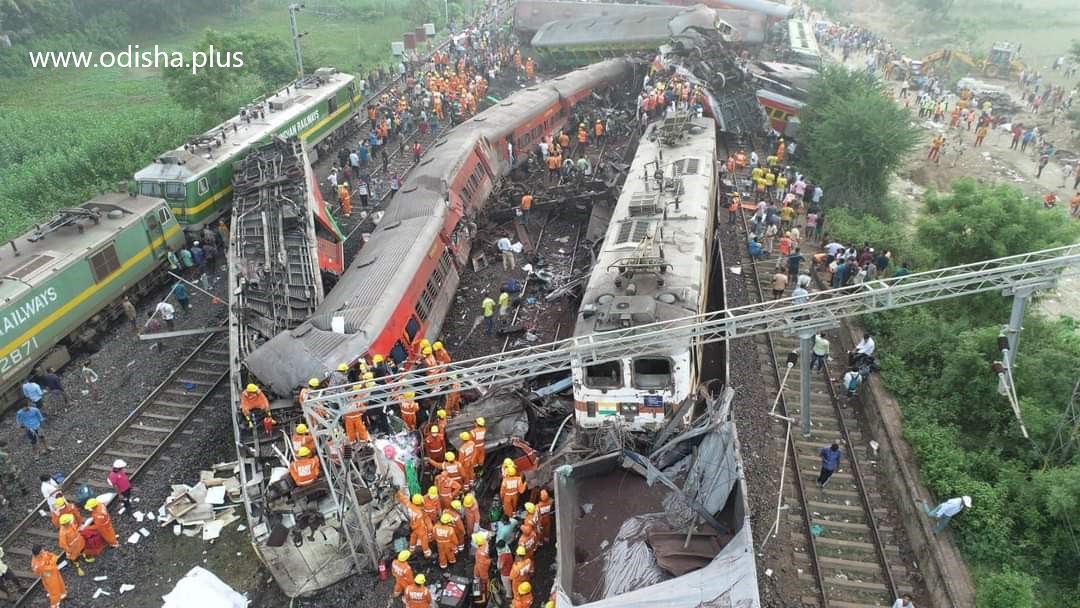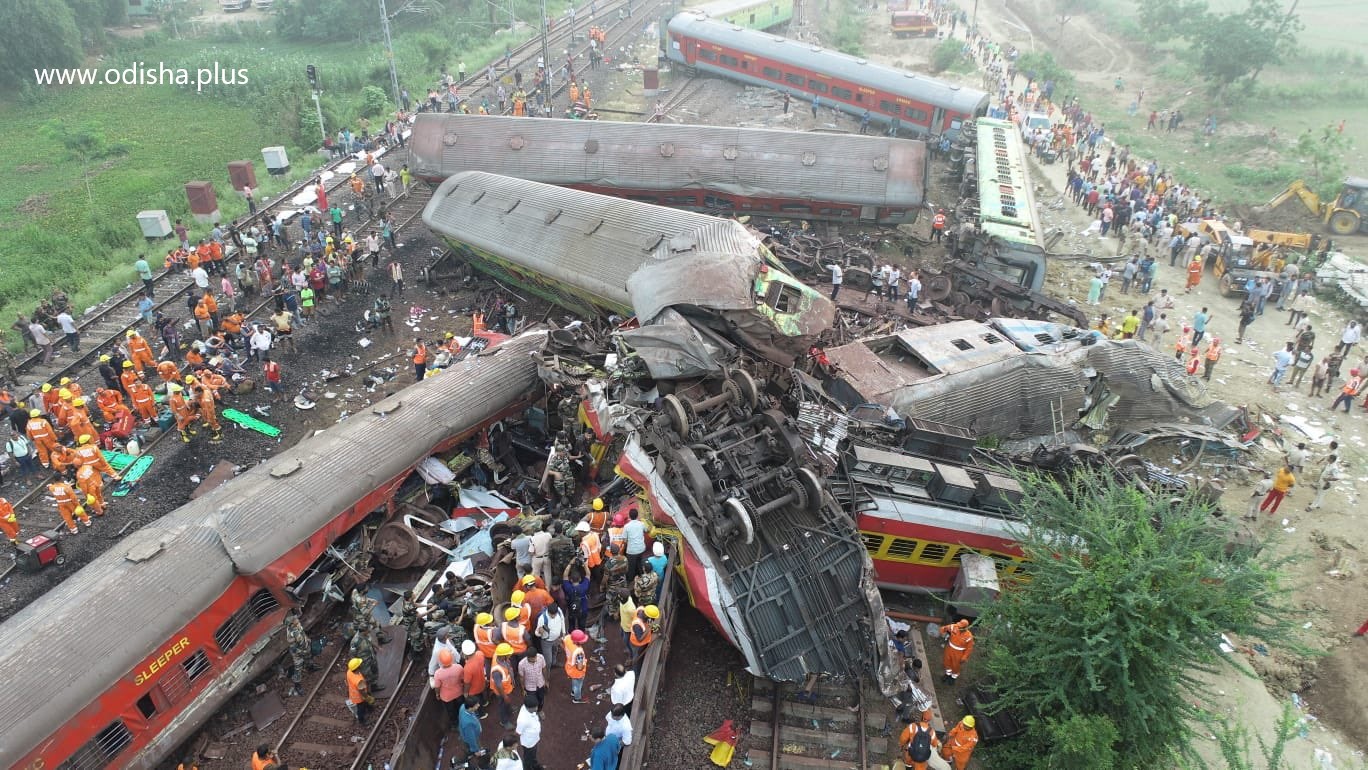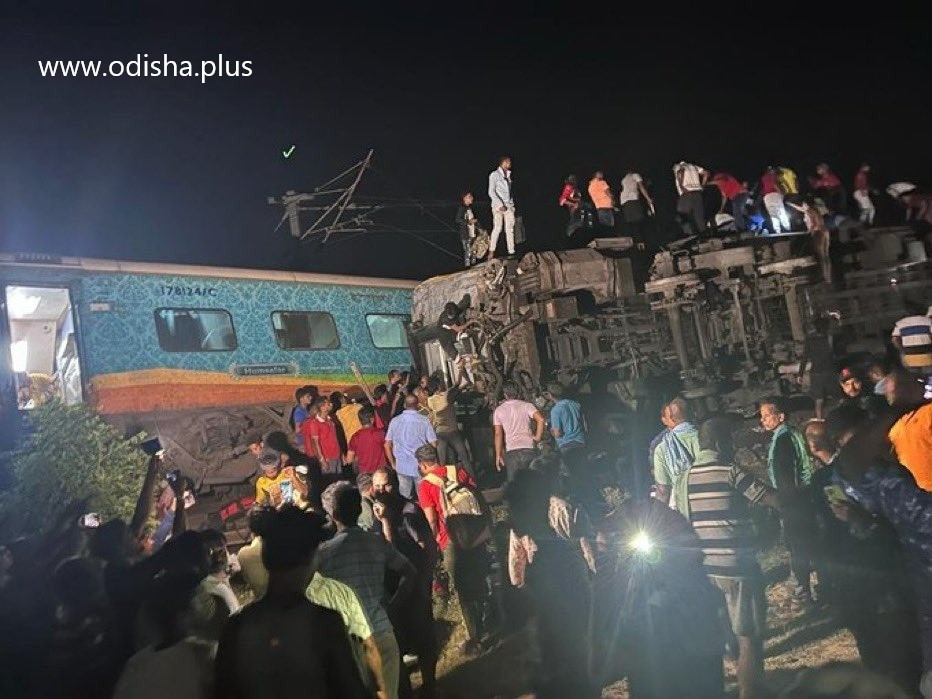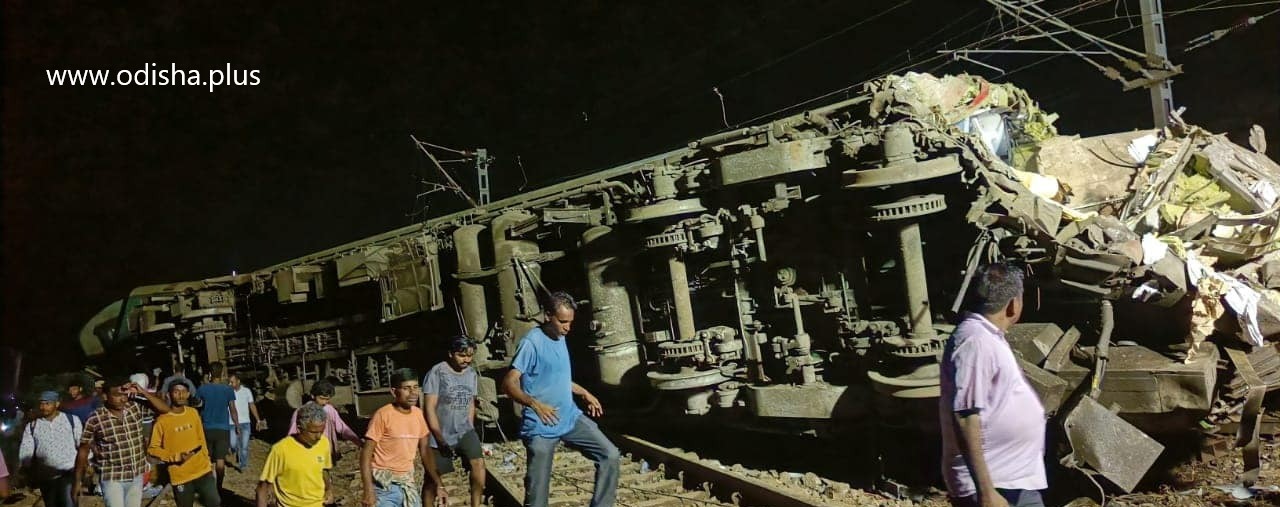Bhaskar Parichha
It is a terrible tragedy that more than 300 people have been killed and 900-plus others injured in twin rail accidents that occurred in Odisha’s Balasore district. At Bahanaga station, the Chennai-bound Coromandel Express slammed headlong into a stationary goods train, tearing away and throwing bogeys onto the parallel track, directly into the path of the oncoming Bengaluru-Howrah Superfast Express as it approached, resulting in a second collision. On the evening of June 2, this happened at around 7 p.m. The rescue work was started fairly quickly, and that is the only positive aspect of this whole situation.

What Really Happened?
There is something mind-blowing about what seems to have happened. It was decided to divert the goods train to a loop line where it stood waiting for the Coromandel Express to pass along the main line. As soon as the switchblades are activated, the track is supposed to be moved back onto the main track after the diversion has been completed, so that any new train approaching the station can continue on the main track after the diversion has been completed.
It is supposed that there is a parallel locking system in place that takes over the responsibility of ensuring that the points have been reversed once the green signal for the oncoming train is activated. It is for this reason that the train is allowed to run on the main track at all times. During the coming in of the Coromandel train, the system failed due to the speed at which it was coming in. The train received the green signal, but the points had not moved back from diverting the train to the loop line as soon as it received the green signal. There was no stopping the Coromandel Express from passing the goods train on the loop line at full speed.
Politicians rushing to show they care have followed, in due course. An official inquiry will happen, with the Rail Safety Commissioner and other experts doing what they can. Their findings are vital but do not crowd out common sense and the rightful expectation of democratic accountability on the part of those in charge.
The signaling system coupled to the switch points failed to work. That is the proximate cause of the accident. Did electronic dysfunction play a role in the failure? Was manual override engaged for whatever reason? Was some repair on hand? The inquiry report will address such questions.

Railway Culture
Neither human error nor technical failure is admissible in operational areas such as railway signaling and air traffic control. Equipment must be proactively maintained, repaired, and replaced as required. Personnel must be trained to keep pace with changing technology. Their duty rosters are managed to ensure rested bodies and alert minds at all times.
The Railway culture is far from an open book to those outside. But the way in which the Vande Bharat trains have been pushed into service one after another leaves room for discomfort.
Modern trains call for more sophisticated maintenance methods. When Shatabdi trains were introduced, all had New Delhi as the starting point or destination. This was to ensure that the existing maintenance facilities at New Delhi could service all these trains. When Vande Bharat trains run connecting diverse parts of the country with relatively high-speed trains, ideally there should be maintenance facilities at all the terminals that the trains run to and from. Reality is far from perfect.
The political urge to take credit for running high-speed trains appears to have taken precedence over prioritizing maintenance and, therefore, safety. That is not a culture welcome in the railways. Whether such expedience is restricted to Vande Bharat trains or affects other parts of the system, no outside observer can comment. What can, however, be said is that inattention to vital maintenance even in one instance is disquieting.
Odisha and Tamil Nadu chief ministers deployed whatever assistance they could. This is commendable. It is tempting to dismiss the hurried visits of the Railway Minister and the Prime Minister to the accident site. This would divert official attention and resources away from relief work. But it is imperative that they show they care, and own up to responsibility.
In an organization like the Railways, ex-gratia payments and high-decibel inquiries will not make up for the lack of a safety culture in an organization as large as the Railways. Maintenance and safety are not as glamorous as the expansion of infrastructure and services.

Glamour & Safety
As a result, safety is compromised. This has been seen in the past in many tragic accidents. The government must prioritize safety and ensure that no negligence takes place in the future. Prioritizing glamour over stodgy safety — that would be a mordant epitaph for expedience politics, but pure travesty when applied to those who trusted the system to their tragic end.
India is home to one of the world’s busiest railway networks, and unfortunately, it is also home to numerous railway accidents. In 2020 alone, India had nine major railway accidents in India.
The previous railway accident occurred on January 24th, 2021. This was when 13 coaches of the Howrah-Kurla Gyaneshwari Super Deluxe Express derailed near West Bengal’s Jhargram district, killing at least 21 people and injuring 72 more. The cause of the accident is still under investigation, but it is believed to have been caused by faulty railway tracks.
In 2020, there were seven major railway accidents in India. A train crash in Telangana killed 68 people in May; a train derailment in Uttar Pradesh killed 23; and a train collision in Maharashtra killed 11. Other railway accidents included a train derailment in West Bengal, a collision between two passenger trains in Karnataka, and a train derailment in Odisha.
India’s railway network needs improvements to address railway accidents. Poor maintenance, outdated infrastructure, and other factors have been identified as the primary causes of accidents. Indian Railways have taken some measures to improve railway safety, but more needs to be done.

Holistic Approach
We must take a holistic approach to ensuring railway safety. This must include improvements to track infrastructure, better maintenance and inspection of tracks, and improved signaling systems. The government must also invest in better technology and training of railway staff to ensure accidents can be prevented and responded to quickly.
The railway accidents that occur in India are tragic events that cause a great deal of loss of life. A lot more needs to be done in order to prevent such occurrences from occurring again in the future.
(Bhaskar Parichha is a Bhubaneswar based senior journalist and columnist. Views are personal)






















